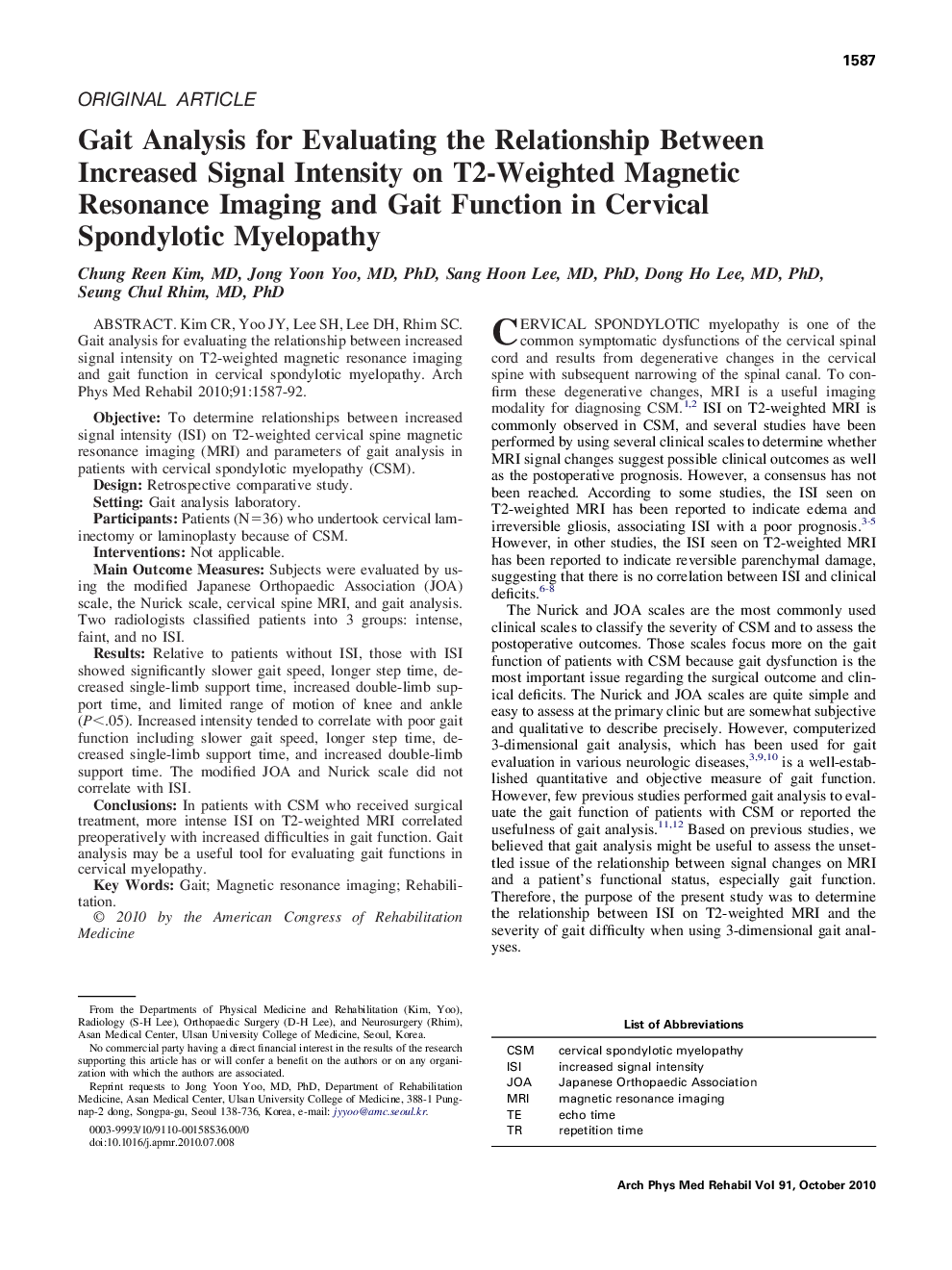| Article ID | Journal | Published Year | Pages | File Type |
|---|---|---|---|---|
| 3450952 | Archives of Physical Medicine and Rehabilitation | 2010 | 6 Pages |
Kim CR, Yoo JY, Lee SH, Lee DH, Rhim SC. Gait analysis for evaluating the relationship between increased signal intensity on T2-weighted magnetic resonance imaging and gait function in cervical spondylotic myelopathy.ObjectiveTo determine relationships between increased signal intensity (ISI) on T2-weighted cervical spine magnetic resonance imaging (MRI) and parameters of gait analysis in patients with cervical spondylotic myelopathy (CSM).DesignRetrospective comparative study.SettingGait analysis laboratory.ParticipantsPatients (N=36) who undertook cervical laminectomy or laminoplasty because of CSM.InterventionsNot applicable.Main Outcome MeasuresSubjects were evaluated by using the modified Japanese Orthopaedic Association (JOA) scale, the Nurick scale, cervical spine MRI, and gait analysis. Two radiologists classified patients into 3 groups: intense, faint, and no ISI.ResultsRelative to patients without ISI, those with ISI showed significantly slower gait speed, longer step time, decreased single-limb support time, increased double-limb support time, and limited range of motion of knee and ankle (P<.05). Increased intensity tended to correlate with poor gait function including slower gait speed, longer step time, decreased single-limb support time, and increased double-limb support time. The modified JOA and Nurick scale did not correlate with ISI.ConclusionsIn patients with CSM who received surgical treatment, more intense ISI on T2-weighted MRI correlated preoperatively with increased difficulties in gait function. Gait analysis may be a useful tool for evaluating gait functions in cervical myelopathy.
